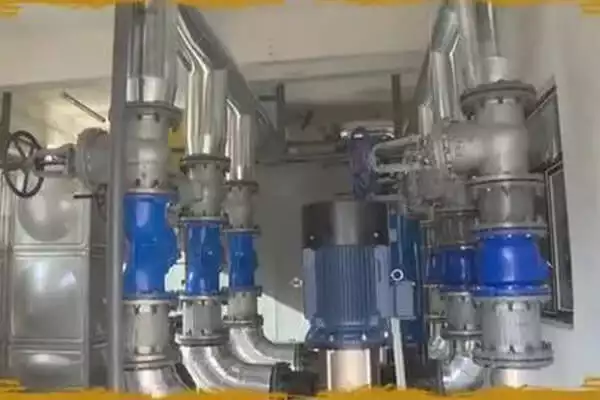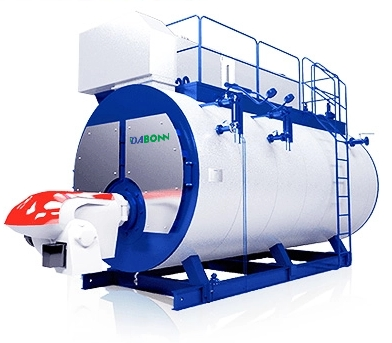
Introduction
Draining a boiler is an essential chore that should only be done by experienced boiler technicians. If you don’t know, you could damage your equipment and end up with expensive repairs. However, if you have been trained as a certified technician or have experience replacing or repairing boilers. Then this guide, I will show you how to drain a boiler safely.
Step 1: Quick Rinse
Firstly. Before starting the draining process, make sure to turn off the boiler and give it a quick rinse. This means running some cold water through the system to flush out any loose debris or sediments that may have accumulated inside.
Step 2: Turn Off the Water Supply and Boiler
Locate the main water supply valve and shut it off to stop the flow of water into the boiler. Next, turn off the power supply to the boiler to ensure your safety during the draining process. This is usually done by turning off a valve or switch on the front of your boiler, but some models may require accessing it from behind.
Turn off your heating system’s gas supply if there’s one attached to your boiler (this will be indicated by an additional dial on top of or beside the main control panel).
Step 3: Drain the Residual Water in the Pipe
The next step is to drain the residual water in the pipe. To get rid of any remaining water in the pipes, open a faucet near the boiler. You should be able to do this by turning off your water supply, or by using a wet/dry vacuum to remove it. If you have access to a plumber’s snake, that will also work well for removing residual water from the inside of pipes.
Step 4: Connect the Hose to the Boiler Drain Valve
You’ll need to attach a hose to your boiler drain valve. So that you can direct water from inside your home into an outdoor drain or bucket, where it can be disposed of safely. Open up this valve and let gravity do its job as you begin draining out all of that dirty water! You should also make sure that when connecting hoses, they are long enough so as not to get caught on anything during use or storage.
Step 5: Open the Drain Valve and Flush the Tank with Water
Once you have drained the tank, it’s time to flush it out. Using a wrench to open your boiler’s drain valve. And let the water run through until it comes out clear. This will get rid of any sediment that has built up in your system and ensure that no debris remains inside when you’re done with this process.
If you have done this step correctly when you turn off the drain valve, there will be no more water coming out of it and it will. If not, repeat this step until it does!
Step 6: Draining the Boiler Tank
The next step is to drain the boiler tank. You will need to open your boiler’s drain valve and allow water to flow freely into a bucket or other container until it stops draining. Then close that valve, and fill up another bucket with clean water from your sink faucet. And repeat this process until there is no more sediment left in your tank (you may need to repeat this process several times).
Step 7: Tighten the Valve
Once you’ve drained all of the water from your boiler, you can begin to tighten the valve. Turn the valve clockwise to tighten it and prevent any leaks from occurring. If you need to remove it for any reason, turn the valve counterclockwise until it comes off easily (but not so loose that water will spill out).
Step 8: Fill the Water Heater
Now your boiler is drained, you can begin refilling it. Turn on the main water supply valve and allow the tank to fill up. Keep a close eye on the pressure gauge to ensure it doesn’t exceed the recommended level.
Be sure to turn off any valves before doing this. Wait for your water heater to heat up and then check its temperature using a thermometer. If it’s above 120 degrees Fahrenheit, turn off your boiler and wait until it cools down before draining again.
Step 9: Reignite the Boiler and Check the Drain Valve
Finally. After you’ve drained the boiler, it’s time to reignite it. Once the boiler has been re-fired, check for leaks around any joints where pipes meet or connect together. If there are any signs of leakage in these areas, contact a qualified plumber immediately to fix them before they cause further damage to your home or property.
If all went according to plan, you should now be able to turn on your faucet and watch as hot water rushes out of it. Congratulations! You’ve successfully drained and drained a boiler!
Conclusion
In conclusion, draining the boiler is a simple procedure that can be accomplished in 9 steps. By following these steps, you’ll be able to drain your boiler safely and effectively. Ensuring the smooth operation of your heating system and prolonging its lifespan. If you’re unsure about the process, it’s best to seek help from us.
Get your best price
Quickly compare 3 FREE quotes
- Engineer quick quote
- The overall delivery speed is fast
- Financial choice
- Low installation costs and cost savings
25 years+ of boiler R&D
More than 20 innovative technologies
